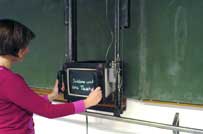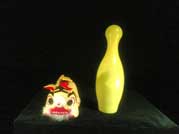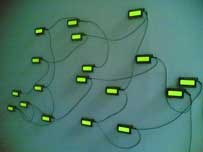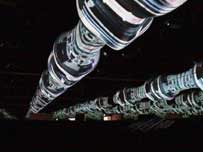Last post on the Algorithmic Revolution. On the History of Interactive Art, ZKM, Karlsruhe, Germany (part 1 and 2).
I’d have played with Tafel, by Frank Fietzek (1993) for hours. In front of an old blackboard, a monitor is attached to tracks. When viewers move the monitor -both horizontally and vertically- words and sentences that were not visible are revealed. When the monitor passes over a position where a word used to be, another word appears. (images 1 and 2)


The Giver of Names, by David Rockeby, is a computer system that gives objects names. The visitor can choose an object placed in the room or anything they might have with them, and place them on the pedestal. The computer grabs an image. It then performs many levels of image processing (outline analysis, division into separate objects or parts, colour analysis, texture analysis, etc.) These processes are visible on the video projection where the objects make the transition from real to imaged to increasingly abstracted as the system tries to make sense of them.
33 Questions per Minute, by Rafael Lozano-Hemmer, consists of a computer program which uses grammatical rules to combine words from a dictionary and generate 55 billion unique, fortuitous questions. The automated questions are presented at a rate of 33 per minute –the threshold of legibility– on 21 tiny LCD screens. The system will take over 3,000 years to ask all possible questions. A keyboard allows participants to add their own questions to the flow.


But there were so many other amazing works like Asymptote‘s Fluxspace series, Giselle Beiguelman‘s Code Up, Ralf Nuhn’s Uncaged series, etc.
Algorithmic Revolution. On the History of Interactive Art, ZKM, Karlsruhe, Germany.
Pictures on flick. Artificial.dk has an excellent review of the show.
